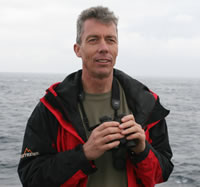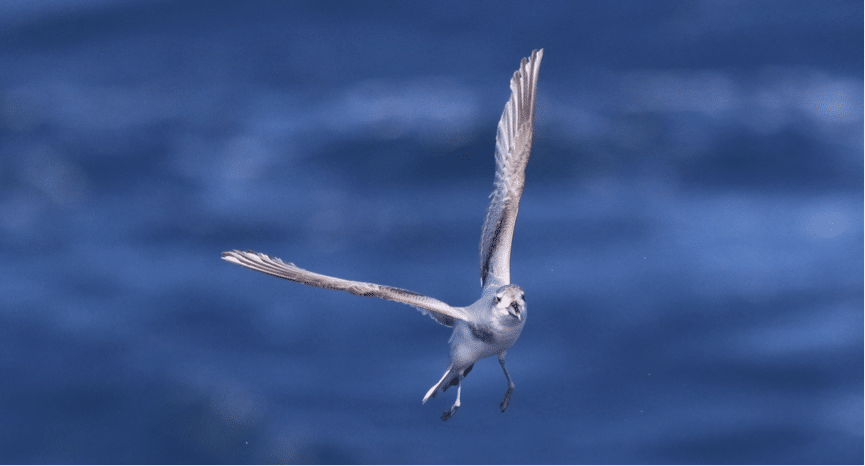 By Peter Ryan, onboard scientist, expert in general ornithology, seabird-fishery interactions, evolutionary ecology, marine debris, solid waste management, biology of oceanic islands.
By Peter Ryan, onboard scientist, expert in general ornithology, seabird-fishery interactions, evolutionary ecology, marine debris, solid waste management, biology of oceanic islands.
Leg 1, Day 5 – December , 2016.
After a frustrating night when the ship went backwards, we awoke well north of Marion, beating slowly SW into a large, lumpy sea alive with Salvin’s Prions. The slow ship’s speed and large numbers of prions made it difficult to estimate bird numbers, but a reasonable number of transects were conducted for kelps and other drifting debris. We finally arrived in the channel between Marion and Prince Edward in the late afternoon, surrounded by large flocks of prions. Of the island’s breeding petrels, only the winter-breeding Grey and Great-winged Petrels were not recorded.
| Salvin’s Prion | 10000s | White-chinned Petrel | 100s |
| Wandering Albatross | 10s | Soft-plumaged Petrel | 10s |
| Northern Giant Petrel | 10s | Sooty Albatross | 10s |
| Diving Petrel spp. | 10s | Brown Skua | 10s |
| Black-bellied Storm Petrel | 10s | Southern Giant Petrel | 1s |
| Grey-headed Albatross | 1s | White-headed Petrel | 1s |
| Indian Yellow-nosed Albatross | 1s | Blue Petrel | 1s |
| Grey-backed Storm Petrel | 1s | Sthn Rockhopper Penguin | 1s |
| Fairy Prioy | 1s | Sooty Shearwater | 1 |
| Kerguelen Petrel | 1 | Light-mantled-Albatross | 1 |
| Black-browed Albatross | 1 |
No cetaceans or man-made debris were seen, but there were several fur seals. A few bull kelp plants were seen at some distance from the islands, and rafts of giant kelps Macrocystis were abundant in the channel between the islands. The day was capped off by lively Christmas celebrations…
